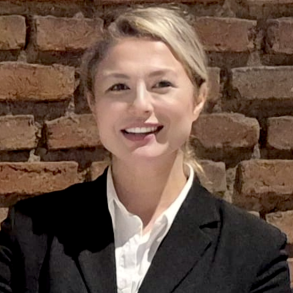As homeowners approach retirement, financial planning becomes a critical aspect of ensuring a comfortable and secure future.
One option that has gained popularity among seniors is the reverse mortgage, a financial tool designed to allow homeowners aged 62 and older to convert a portion of their home equity into cash without selling their property or making monthly mortgage payments.
There are several types of reverse mortgages, each with distinct features, benefits, and considerations. In this blog post, we will discuss three different types of reverse mortgages and explain their purposes.
What is a Reverse Mortgage?
Before talking about the types, it is a good idea to understand the basics of a reverse mortgage and explain what it is all about.
A reverse mortgage is a special type of loan that lets homeowners access the money they've built up in their home's value (equity). They can receive payments from this loan to use for various purposes, such as buying a new house, funding home improvements, or covering general expenses.
While similar to a home equity loan in that it allows you to use your equity, reverse mortgages are specifically designed for homeowners aged 62 and older. These individuals can use their home as security to borrow against their existing equity.
Like a regular mortgage, you are borrowing money using your home as collateral, and you still hold the title. These loans can be a helpful source of extra income for retirees, allowing them to pay for things like healthcare, existing mortgages, rent, or other investments.
What makes a reverse mortgage unique compared to other home loans is that you don't make monthly repayments. Instead, the loan is typically repaid when the borrower dies, sells the home, or no longer lives there.
It's important to understand that unlike most mortgages, where the amount you owe goes down with monthly payments, a reverse mortgage has no such payments. This means the amount owed will actually increase over time as interest and fees accrue.
Reverse mortgages are most suitable for people who have a lot of equity in their homes but have limited retirement income or want to increase their wealth after they've stopped working.
3 Different Types of Reverse Mortgages
The reverse mortgage market has evolved to offer flexibility, with different types tailored to specific financial situations. The three primary types of reverse mortgages are:
- Home Equity Conversion Mortgages (HECMs),
- Proprietary Reverse Mortgages, and
- Single-Purpose Reverse Mortgages.
Each serves distinct purposes, and understanding their differences can help homeowners make informed decisions. These will be explained in more detail below.
1. Home Equity Conversion Mortgage (HECM)
The Home Equity Conversion Mortgage, or HECM, is the most common type of reverse mortgage and is insured by the Federal Housing Administration (FHA). Available to homeowners aged 62 and older, HECMs are widely accessible through FHA-approved lenders.
One of the key advantages of HECMs is their versatility, as borrowers can choose from multiple payment options: a lump sum, monthly payments, a line of credit, or a combination of these.
This flexibility makes HECMs suitable for various needs, such as paying off an existing mortgage, covering living expenses, or funding home improvements.
HECMs are subject to strict regulations to protect borrowers. For instance, borrowers must undergo counseling from a HUD-approved counselor to ensure they understand the loan’s implications.
What’s more, the FHA sets limits on the amount that can be borrowed, based on the home’s value and the borrower’s age. The insurance provided by the FHA also ensures that borrowers are not liable for more than the home’s value when the loan is repaid, even if the loan balance exceeds the home’s worth.
However, HECMs come with upfront costs, including mortgage insurance premiums, origination fees, and closing costs, which can be significant. For seniors seeking a government-backed option with flexible disbursement methods, HECMs are often the go-to choice.
A Practical Example
Imagine Mary, a 70-year-old who has fully paid off her $300,000 house. To boost her monthly income during retirement, she applies for and qualifies for a Home Equity Conversion Mortgage (HECM).
Based on her age, the value of her home, and prevailing interest rates, she is approved for a $150,000 line of credit. Mary decides to draw $2,000 each month from this credit line to add to her Social Security benefits.
She remains living in her home, and the amount she owes on the loan increases over time as she takes out money and interest builds up. The loan is eventually settled when Mary sells the house, permanently moves out, or passes away
2. Proprietary Reverse Mortgages
Proprietary reverse mortgages are private loans offered by various financial institutions, such as banks and mortgage companies.
Unlike Home Equity Conversion Mortgages (HECMs), they aren't backed by the Federal Housing Administration (FHA), and thus give lenders the freedom to establish their own rules and conditions.
These loans are usually tailored for homeowners with expensive properties that are worth more than the maximum amount you can borrow with an HECM.
For instance, in 2025, there is a limit on how much you can get with an HECM (this amount changes each year), but proprietary reverse mortgages can provide access to much larger amounts for those who own luxury homes.
Proprietary reverse mortgages often have fewer government regulations compared to HECMs, which can sometimes lead to lower initial costs. Also, because they do not have the security of FHA insurance, they might come with higher interest rates or less favorable terms overall.
Borrowers can still choose from different ways to receive the money, similar to HECMs, but who qualifies and how the loan is structured can vary quite a bit from one lender to another.
These types of loans can be a good fit for wealthy retirees who own high-value homes and need to access a significant amount of their home equity.
Nevertheless, it's extremely important to do your homework when considering proprietary reverse mortgages, as the terms can differ considerably between different lenders.
A Practical Example
Consider this scenario to illustrate how a proprietary reverse mortgage works. John, a 65-year-old homeowner, owns his $1.2 million property outright. To finance home improvements and travel, he seeks a private reverse mortgage from a non-government lender.
Based on his age, the home's value, and the lender's conditions, he is approved for a single payment of $500,000. John receives these funds immediately and continues to live in his home without any required monthly mortgage payments.
The amount owed on the loan increases over time due to accrued interest and fees. The loan is repaid through the sale of the home when John decides to sell, permanently moves out, or passes away.
3. Single-Purpose Reverse Mortgages
Single-purpose reverse mortgages are the least common type and are typically offered by state or local government agencies, nonprofit organizations, or certain private lenders.
As the name suggests, these loans are designed for a specific purpose, such as paying property taxes, covering home repairs, or making energy-efficient upgrades.
Given their restricted use, single-purpose reverse mortgages often have lower costs and interest rates compared to HECMs or proprietary loans. They are also more likely to be available to homeowners with lower incomes or modest home values.
The downside of single-purpose reverse mortgages is their lack of flexibility. People who take out these loans must use the money for the specific reason it was intended and cannot use it for other expenses.
In addition, these loans are not widely available since not every area or lender offers them. For retirees who have particular, defined financial needs and limited funds, single-purpose reverse mortgages can be an affordable option, yet it is important to carefully think about the loan's limitations.
A Practical Example
Let’s take a look at an example to demonstrate this type of mortgage. Sarah, a 68-year-old homeowner, owns a home worth $200,000 with no mortgage. She needs to replace her leaking roof but lacks the funds for the $15,000 repair.
Her local housing agency offers a single-purpose reverse mortgage for home improvements.
Sarah qualifies and receives a lump-sum payment of $15,000, which she uses to fix her roof. She continues living in her home without making monthly payments, and the loan balance accrues interest over time.
Comparing the 3 Types of Reverse Mortgages
While all share the common feature of no required monthly payments, the three main types differ in their features, eligibility, and suitability.
What are the Risks of Reverse Mortgages?
Even though reverse mortgages can be a good option for seniors, they do have drawbacks. To begin with, reverse mortgages can be costly. The overall expense depends on the specific type of loan, but you still need to cover all the associated costs, including mortgage insurance, origination and servicing fees, and other third-party charges.
Furthermore, you remain responsible for paying your homeowners insurance and property taxes in addition to these fees, which can make this loan expensive for those who have already paid off their original mortgage.
Many reverse mortgages also have interest rates that can change, potentially increasing your overall costs significantly over the loan's duration.
Who Should Consider a Reverse Mortgage?
Reverse mortgages are not for everyone. They are best suited for seniors who plan to stay in their homes long-term, have significant home equity, and need additional income to cover expenses.
Homeowners with limited retirement savings or those facing high healthcare costs may find reverse mortgages particularly appealing. Conversely, those planning to move soon or hoping to leave a large inheritance may want to explore other options.
Wrapping Up
Reverse mortgages offer a powerful way for seniors to unlock their home’s equity. The three main types. As we explained above, cater to different needs, from broad financial support to targeted expenses. By understanding the features, benefits, and risks of each, homeowners will be able to make more informed decisions that align with their retirement goals.


























Discussion